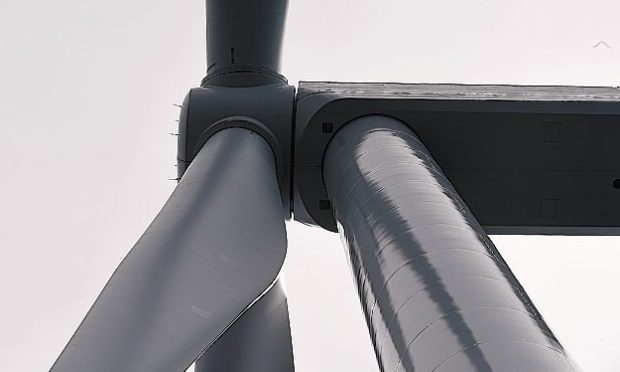Anti windfarm campaigners have spoken of their horror that an osprey may have been killed by a turbine at Moy, south of Inverness.
The male osprey was found injured a fortnight ago at the base of a giant tower and later put down by a vet due to the extent of its wounds.
The scheme’s operator Eneco is working with RSPB Scotland and a conservation expert to try to establish if there are site-specific factors that attracted the bird.
A spokeswoman for the company said: “The Scottish SPCA was quickly informed in line with procedures and the injured bird was taken to a local vet.
“Unfortunately, as a result of its injuries, the bird was put to sleep. This is deeply upsetting.”
She claimed ospreys were “known to have a 98% avoidance rate,” and that the site had “not been identified as an area for ospreys according to years of prior survey and consideration.”
The Scottish SPCA confirmed that post mortem results had since confirmed the bird had multiple fractures to its right wing “consistent with it having collided with a wind turbine.”
The RSPB conferred that it appeared the osprey was killed as a result of a collision with a turbine.
Obtaining conclusive windfarm birdstrike data is notorously difficult.
The World Council for Nature claims that “the British public is being misinformed regarding bird mortality at windfarms,” and that data collated elsewhere in Europe has shown that “birds and bats are being slaughtered by the million.”
Pat Wells of pressure group Strathdearn Against Windfarm Developments (SAWD) said: “In our objection to Moy windfarm, we flagged up the serious risk to osprey and other raptors with flight paths across the local hills.
“The Moy Windfarm environmental statement admitted the scheme posed a risk to red kite, breeding golden plover and curlew. And yet it stated that ‘due to the lack of breeding evidence and/or low levels of activity to all other key species, the development is unlikely to have the potential to affect other species to any significant extent’.”
Sawd maintains that ospreys have nested within a few miles of the Moy site for years.
Evidence emerged in April of a dramatic reduction in the number of breeding birds in Sutherland since the construction of SSE’s nearby Gordonbush windfarm, near Brora.
The number of golden plover crashed by 80% within the site during the first two years of its operation.
SSE said it had worked closely with RSPB Scotland to minimise any risk to the species locally.
